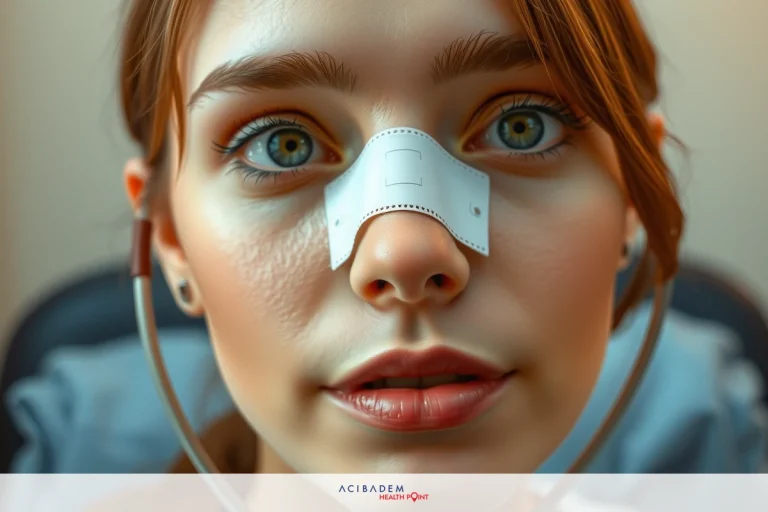Should You Tape Nose After Rhinoplasty?
Should You Tape Nose After Rhinoplasty? Taping the nose after rhinoplasty is a common practice that can aid in the healing process. It’s important to understand why this method is often recommended by medical professionals, and what benefits it may offer during your recovery period. Taping can provide support to the nose, reduce swelling, and help maintain the new shape of your nose as it heals.
Yet, like any post-operative care method, there are considerations to keep in mind before deciding if taping is right for your recovery plan. There isn’t a one-size-fits-all answer as each person’s recovery from rhinoplasty can be different. The decision to tape or not should be made in consultation with your healthcare provider, taking into account factors such as your skin type, sensitivity, and the specific details of your surgery. Finally, if you do choose to use taping as part of your recovery process, it’s crucial that you learn and apply the correct technique to ensure its effectiveness.
Benefits of Taping
Taping the nose after rhinoplasty can provide several key benefits during the recovery process. Primarily, it offers support to the nose structure while it heals from the surgery. This support is crucial in the initial post-operative period when the tissues are most vulnerable. The tape acts as a kind of splint, holding the nose in its new shape and preventing any movement that could disrupt the healing process.
Should You Tape Nose After Rhinoplasty? Another significant benefit of taping is the reduction of swelling. After a rhinoplasty, it’s normal for the nose to swell as part of the body’s natural response to surgery. This swelling can be uncomfortable and may affect your perception of your new nose profile. Taping can help control this swelling, especially when combined with other swelling-reduction strategies such as elevating the head and using cold compresses.
Lastly, taping plays an important role in maintaining the new shape of your nose during recovery. Rhinoplasty involves changes to the structure of your nose, and these changes need time to stabilize. Taping helps ensure that your nose retains its new structure during this crucial period, thus enhancing the results of your surgery. It’s worth noting that while taping may seem like a minor aspect of post-operative care, it can significantly contribute to achieving optimal outcomes from your rhinoplasty.
Considerations for Taping
While taping the nose after rhinoplasty can offer numerous benefits, it’s also crucial to consider certain factors before incorporating this practice into your recovery plan. One of the first considerations should be your skin type. Some individuals may have sensitive skin that reacts negatively to adhesive tape, leading to redness, irritation, or even allergic reactions. Therefore, it’s important to use hypoallergenic surgical tape and monitor your skin closely during the initial days of taping.
Should You Tape Nose After Rhinoplasty? Another factor that needs to be considered is your level of comfort with applying and removing the tape. It requires a certain level of dexterity and understanding to place the tape correctly on your nose. If not applied properly, the tape may not provide the intended support and could potentially cause discomfort or interfere with the healing process. It’s essential to learn the correct technique from a medical professional and practice under their supervision before taking over this responsibility.
Moreover, it’s crucial to consider the duration of taping. Taping is typically recommended for the immediate post-operative period, but the exact duration may vary based on individual healing rates and the specific details of your surgery. Prolonged use of tape beyond the recommended period might lead to unwanted issues like skin irritation or dependency on external support for nose stability. On the other hand, prematurely discontinuing taping might hinder optimal healing and interfere with achieving desired results from your rhinoplasty.

Proper Technique for Taping
Proper taping technique is essential to maximize the benefits of this practice after rhinoplasty. The main goal of taping is to provide support to your newly shaped nose and help reduce swelling, and the correct application of tape can significantly affect these outcomes. When preparing to apply the tape, ensure that your hands are clean, and the tape you’re using is hypoallergenic to minimize any potential irritation.
The first step to taping is to cut the surgical tape into appropriate lengths. The exact length can vary based on individual needs, but generally, one should aim for pieces that can comfortably cover the length of the nose from just below the eyebrows down to the tip of the nose. Start by placing one end of the tape at the top of your nose, just below your eyebrows, and smooth it down along the length of your nose, ensuring it lies flat without any wrinkles or air bubbles. This process might need some practice initially, but with time, it becomes relatively straightforward.
One crucial point to remember while applying tape is to avoid pulling or stretching the skin excessively. Applying too much tension while taping could lead to discomfort and may potentially disrupt the healing tissues underneath. Instead, follow the natural contour of your nose gently and press the tape down smoothly. After application, ensure that there are no loose ends that could catch on clothing or bedding.
Frequently Asked Questions
How long should I tape my nose after rhinoplasty?
The duration of taping can vary depending on your individual healing progress and the specific instructions provided by your surgeon. In most cases, taping is recommended for the first one to two weeks following rhinoplasty surgery. However, it's important to consult with your healthcare provider for personalized guidance on the duration that suits your unique circumstances.
Can I remove the tape temporarily for cleaning or showering?
It is generally recommended to keep the tape on continuously during the initial post- operative period, as removing it too frequently may disrupt the support and stability provided by the tape. However, if you need to clean or shower, you can carefully work around the tape without removing it entirely. Gently pat dry around the taped area after cleansing to avoid disturbing the tape's position.
Will taping my nose cause any pain or discomfort?
When applied correctly, taping should not cause significant pain or discomfort. Some individuals may experience mild discomfort initially as they adjust to the sensation of having tape on their nose. If you experience excessive discomfort, irritation, or any adverse reactions such as skin redness or swelling, it's important to contact your surgeon for further evaluation and advice.
Can I apply makeup over the tape?
It is generally advisable to avoid applying makeup directly over the tape to prevent potential interactions with adhesives or irritants in cosmetic products. However, you can consult with your healthcare provider for specific recommendations regarding makeup use during your recovery period.
What if I accidentally remove or loosen the tape before the recommended time?
If you accidentally remove or loosen the tape before the recommended time, gently try to reapply it using clean hands. If you encounter any difficulties or concerns, it's best to contact your surgeon or healthcare provider for guidance. They can assess the situation and advise you on the appropriate course of action to ensure optimal healing and recovery.











